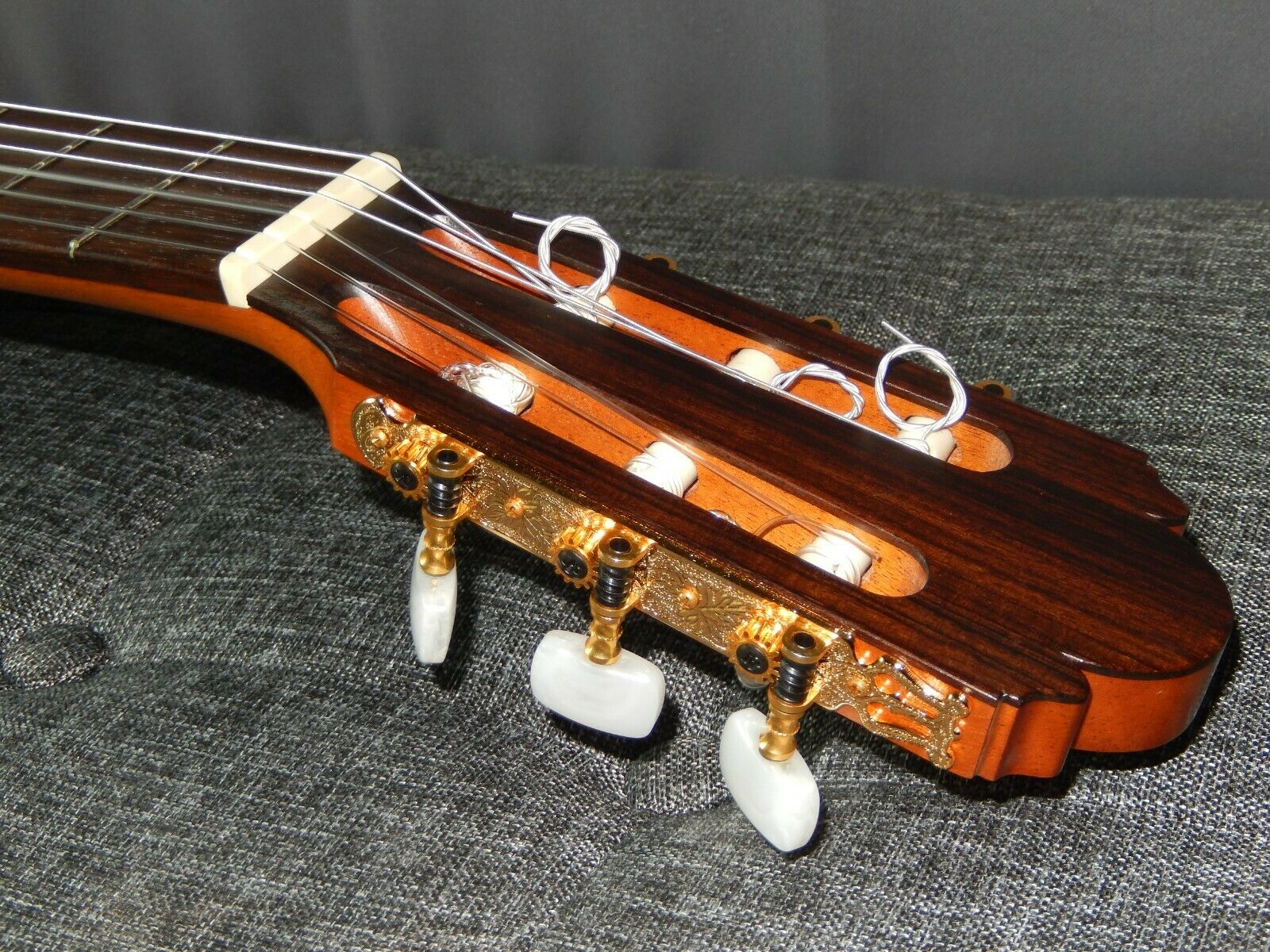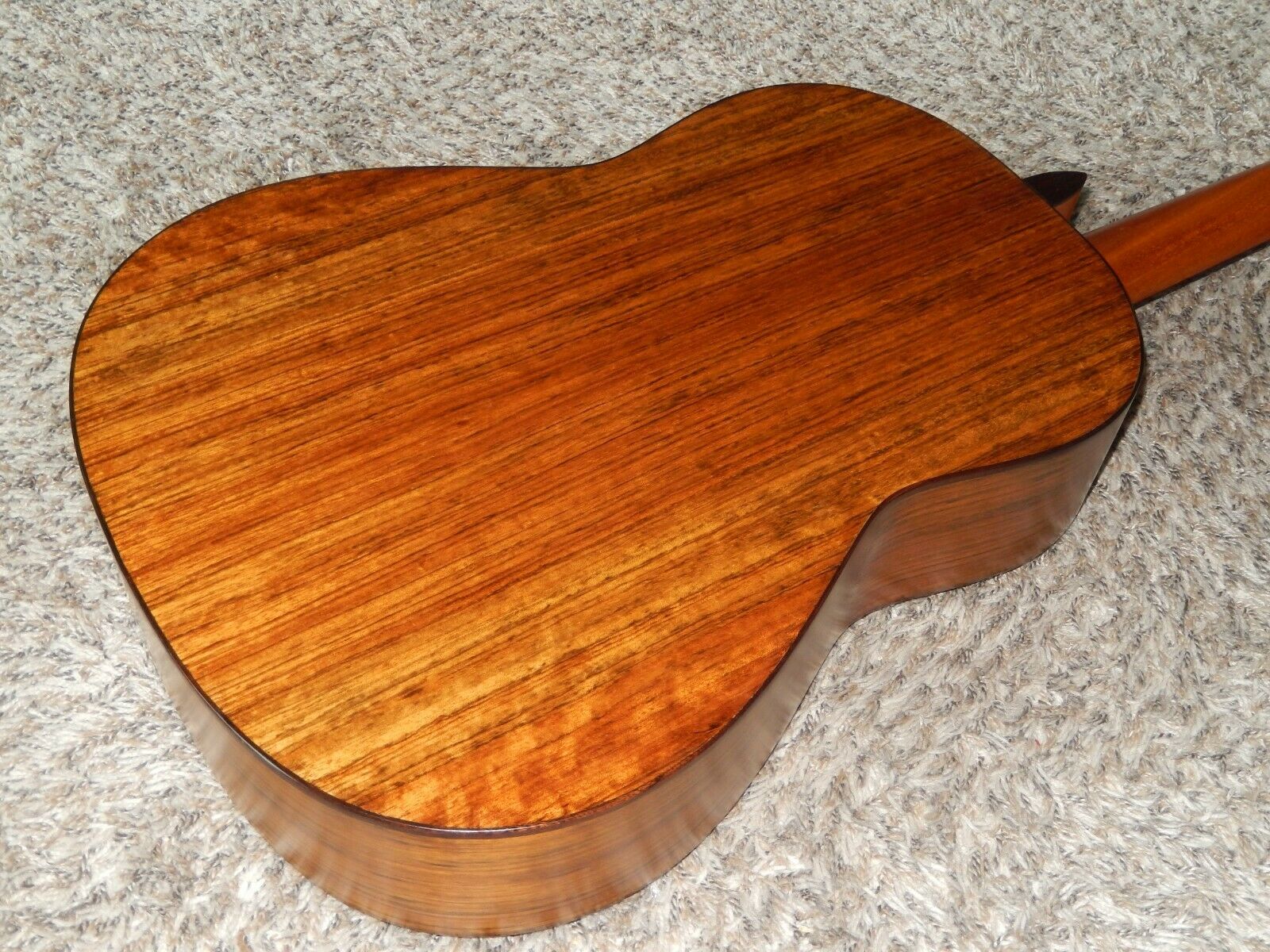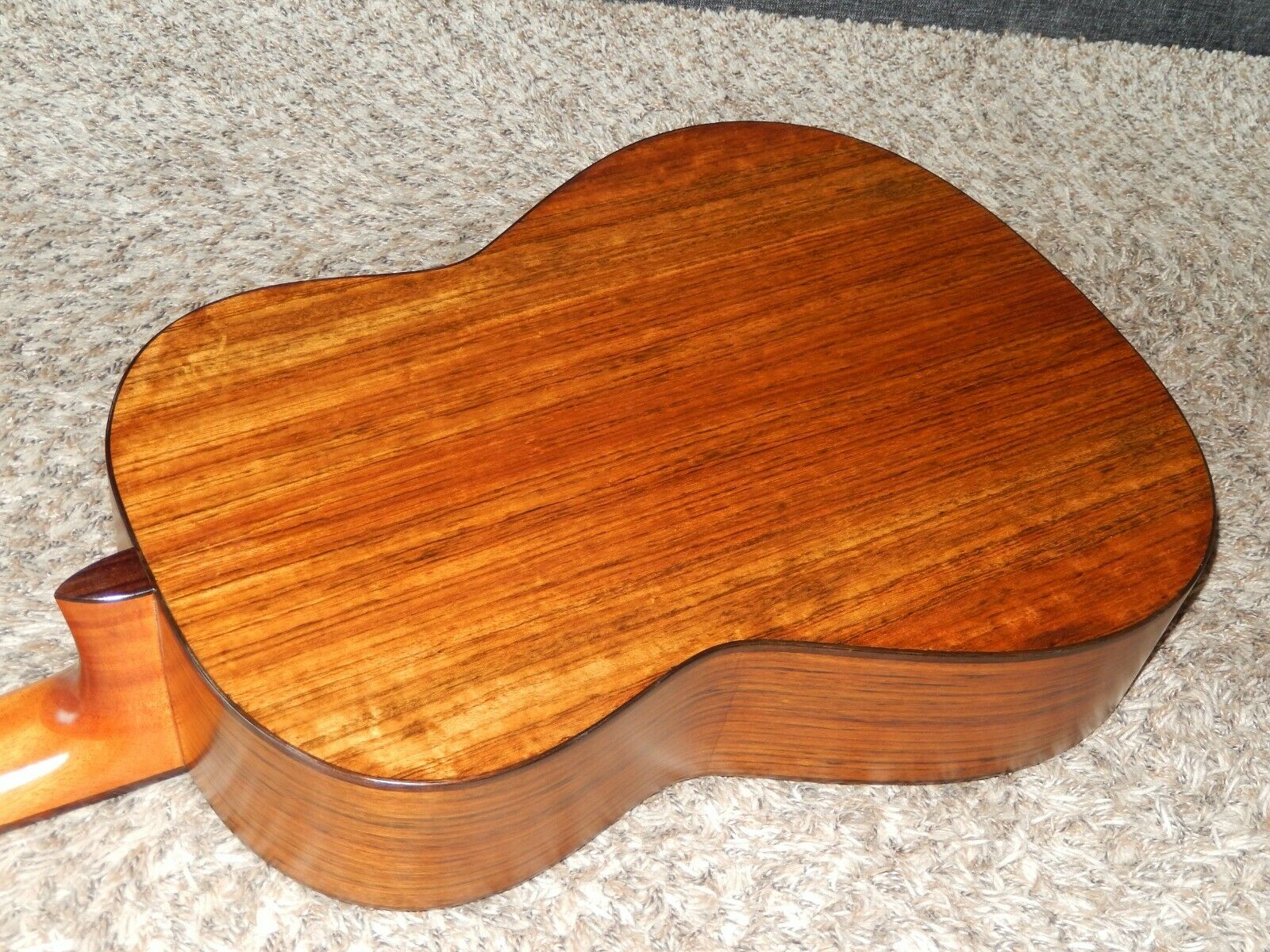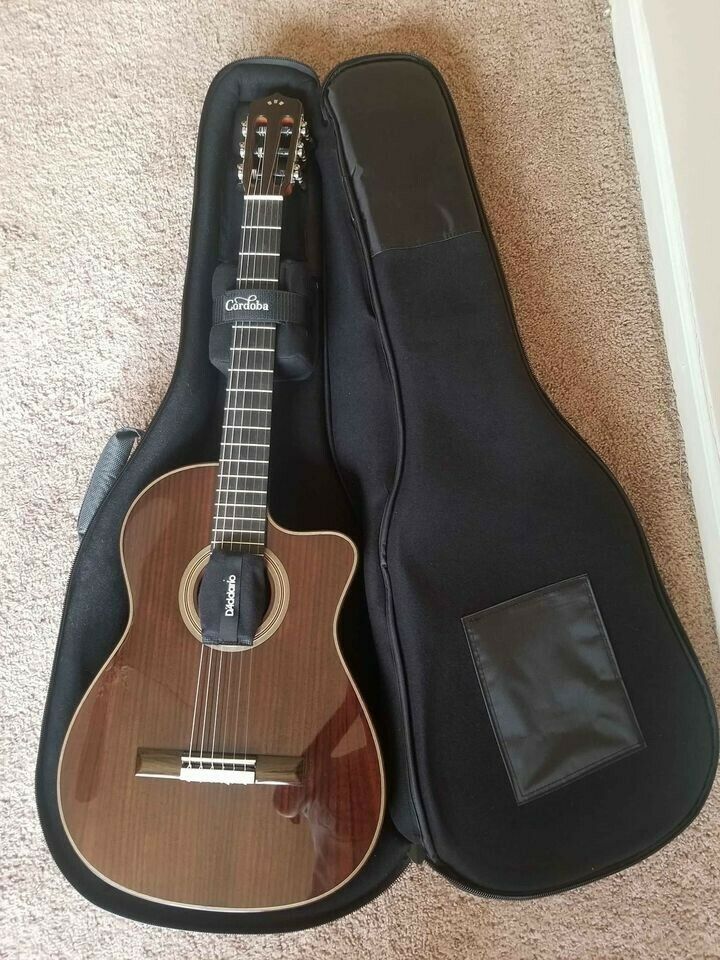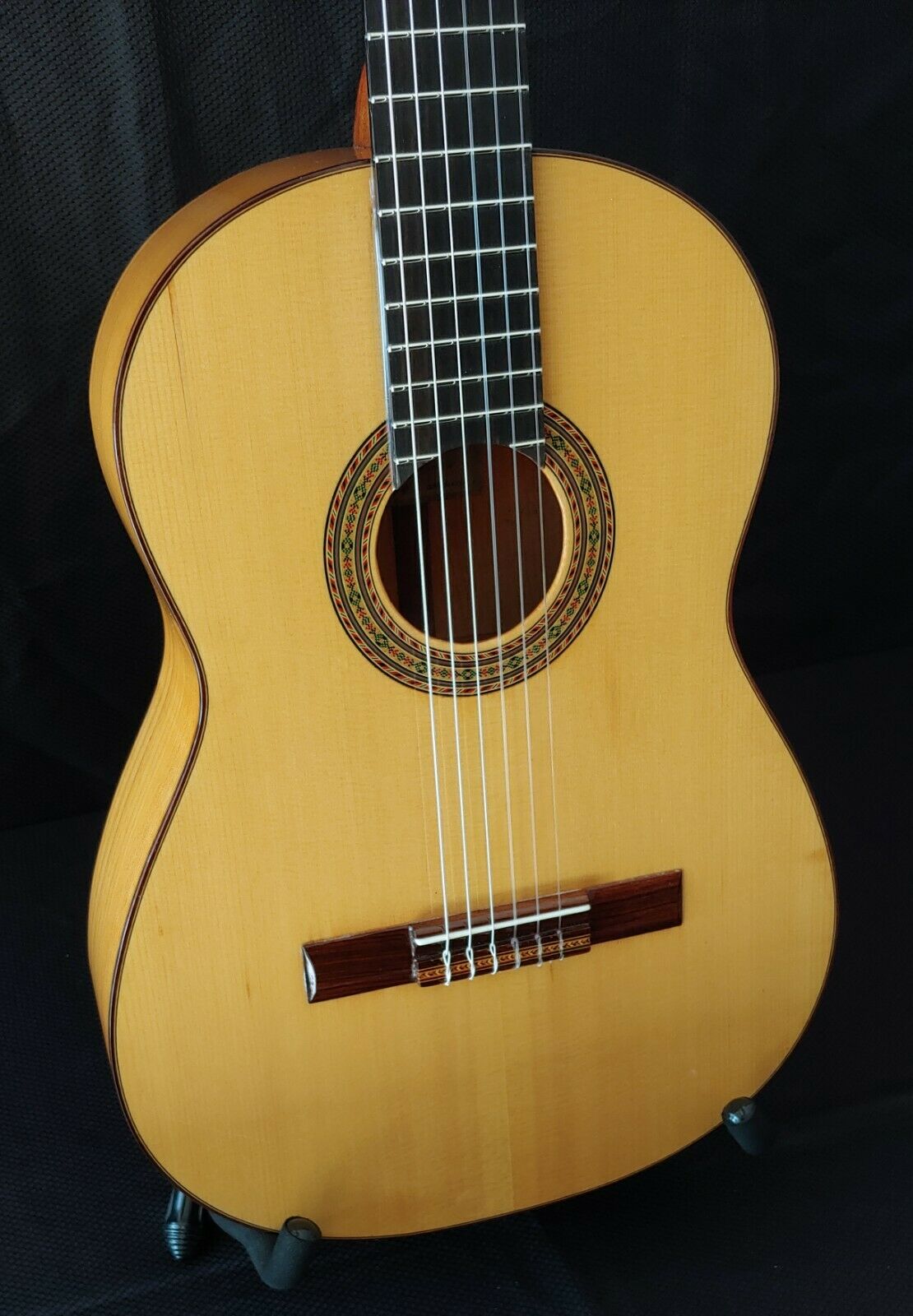-40%
HAND MADE IN 1999 - YUKINOBU CHAI No6 - SIMPLY AWESOME CLASSICAL ESTUDIO GUITAR
$ 422.4
- Description
- Size Guide
Description
Please read my 3 days return policy at the bottom of the page.Yukinobu Chai Classical Estudio Guitar No6 1999
This guitar was made in 1999 at Master Luthier Yukinobu Chai's
workshop
Yukinobu’s career started in late 1960s and over the years he became one of the highest respected luthiers in Japan. Most likely the major reason for that were very moderate prices for his wonderful instruments.
In that respect Yukinobu had business philosophy very similar to that represented by Ryoji Matsuoka, Kazuo Yairi or brothers Hiroshi and Mitsuru Tamura.
In early 1980s Yukinobu became the major supplier for Niibori School of Guitar Ensemble, making not only whole range of prime (regular) models but also many alto, soprano, bass and contrabass guitars. Since Yukinobu's passing in 2011, his workshop is managed by his son Yukio, a great luthier on his own. Yukinobu's most famous pupils are Ichizo Kobayashi, Tatsuro Kobayashi, Sakae Ishi and Kuniyoshi Matsui.
This guitar No6 being priced 60 000 yen in 1999 was one of lowest end solid top models in Yukinobu’s lineup of that era. Yet
it sounds better than many “all solid woods” guitars sold in USA for 00USD. It
is just a high grade student level instrument,
This guitar offers great volume and response combined with punchy and quite bright tonality, crispy clear round trebles, relatively deep yet clean basses, all well balanced, with great level of note clarity and separation, and moderately long sustain. With its current action it is also quite easy to play.
Despite being 20+ years old and one tiny dent on its soundboard it is practically unused instrument, very likely stored in the case for all its lifespan.
Specifications
:
Top: Solid Cedar/7 braces fan/ semi-gloss finish
Back and Sides: Acacia "laminate"/semi-gloss finish
Neck: Nato
Fingerboard: Rosewood
Scale: 650 mm
Nut width: 51 mm
Its action is set to 3.50 mm under E6 and 3.00 mm under E1, with plenty of extra room on the saddle.
This guitar will be shipped in used hard-shell case in still good condition.
Real Value of Japanese Vintage Guitars
The key to understand value of vintage Japanese guitars is to acknowledge galloping price inflation (devaluation of Japanese yen) during 1960s & 1970s. This inflation slowed down in 1980s.
During 1960s and most of 1970s model numbers of Japanese guitars were strictly interconnected with their prices in Japanese yen. By early 1980s and during following decades model numbers were no longer strictly associated with their prices. Some Japanese guitar makers introduced model names instead of model numbers. Others were still using model numbers with addition of letters and/or other symbols.
It is then important to understand that two Yamaha GC10 guitars made 10 years apart are two instruments of totally different class. The same applies to any other Japanese maker/brand.
The logical way to estimate the true class of any given Japanese made instrument is to compare its price with the average annual salary of wage workers in Japanese private sectors. This salary was: 450 600 yen in 1965 - 825 900 yen in 1970 - 1 868 300 yen in 1975 - 2 689 000 yen in 1980 - 3 163 000 yen in 1985 - 3 761 000 yen in 1990 - 4 107 000 yen in 1995 - 4 082 000 yen in 2000.
Any guitar priced 100 000 yen in 1970 (labelled as No10 or No100) would be priced 200 000 yen in 1975 (relabeled to No20, No200 or 2000), 300 000 yen in 1977 (labelled as No3, No30 or 3000) and 500 000 yen by 1985 (labelled as No50 or 5000).
Starting in 1977 Masaru Kohno introduced his new models No40 priced 400 000 yen and No50 priced 500 000 yen. By early 1980s Kohno started using model names instead of numbers and was steadily raising their prices without changing model labeling. His very top model 50 became model “Special”, and a decade later it became model “Maestro”. Naturally, all other Japanese guitar makers were doing similar pricing (labelling) upgrades.
Knowing all of that, you can bet on that Masaru Kohno No50 made in 1982 is practically the same grade instrument as Kohno No20 made in 1972, or Kohno no 30 made in 1975.
In early 1970s the lowest Ryoji Matsuoka (all plywood) model was 10, followed by (solid top) models 15, 20, 25, 30, 40, 50, 60, 80 and (all solid woods) models 100 and 150. Models 50, 60 and 80 were made with non-solid figured Brazilian Rosewood (double) back and sides and top model 150 was the only one made with solid figured Brazilian Rosewood b/s.
In 1980 the lowest Matsuoka model was (all plywood) 20, followed by (solid top) models 30,40,50, 60 and all solid woods models 80,100,150 and 200. By 1990 the lowest Matsuoka model was M40 and the highest was M300. By 2010 the lowest Matsuoka model was M50 and the top model was M270.
You can bet that Ryoji Matsuoka model 50 from 1980 is of the same grade as model M100 from 2000, model 100 from 1980 is of the same grade as model M150 from 2000, model 150 from 1980 is of the same grade as M200 from 2000 and model 200 from 1980 is of the same grade as model M300 from 2000.
It is important to mention that if modern era luthiers are using 40+ years old woods to make an “all solid” wood classical guitar, its price is minimum 00.
All vintage guitars made with Brazilian Rosewood are especially precious, including those made straight grain varieties and those with non-solid b/s.
Because response and tonal properties of Spruce soundboards are improving over time, long seasoned Spruces are far more precious than long seasoned Cedars.
It is not very difficult to find out what are current prices of such guitars made by world’s leading luthiers.
Returns
If you are not happy with your purchase you may return the guitar for a full refund of original payment less any shipping charges.
All you need to do is:
1.
Notify me within 48 hours after receiving the guitar.
2.
Pack guitar the same way I do it, using the same box and materials and s
hip it back to me within 24 hours after "return notification".
Naturally if you expect to receive a full refund, guitar has to be returned in the same condition as I ship it to you.
P.s. If you'd like to check my "modest" playing skills click on the links below:
http://youtu.be/ExVwfhLy1gQ
http://youtu.be/XNdeSWxb2nU
http://youtu.be/mecVgriaKJ0
http://youtu.be/O9ErnhZhDxw
http://youtu.be/ceVTybPnq7c
http://youtu.be/Zyz8eZeTSRQ
http://youtu.be/T8bkPi4jhss
http://youtu.be/W1FaCjodgZM






